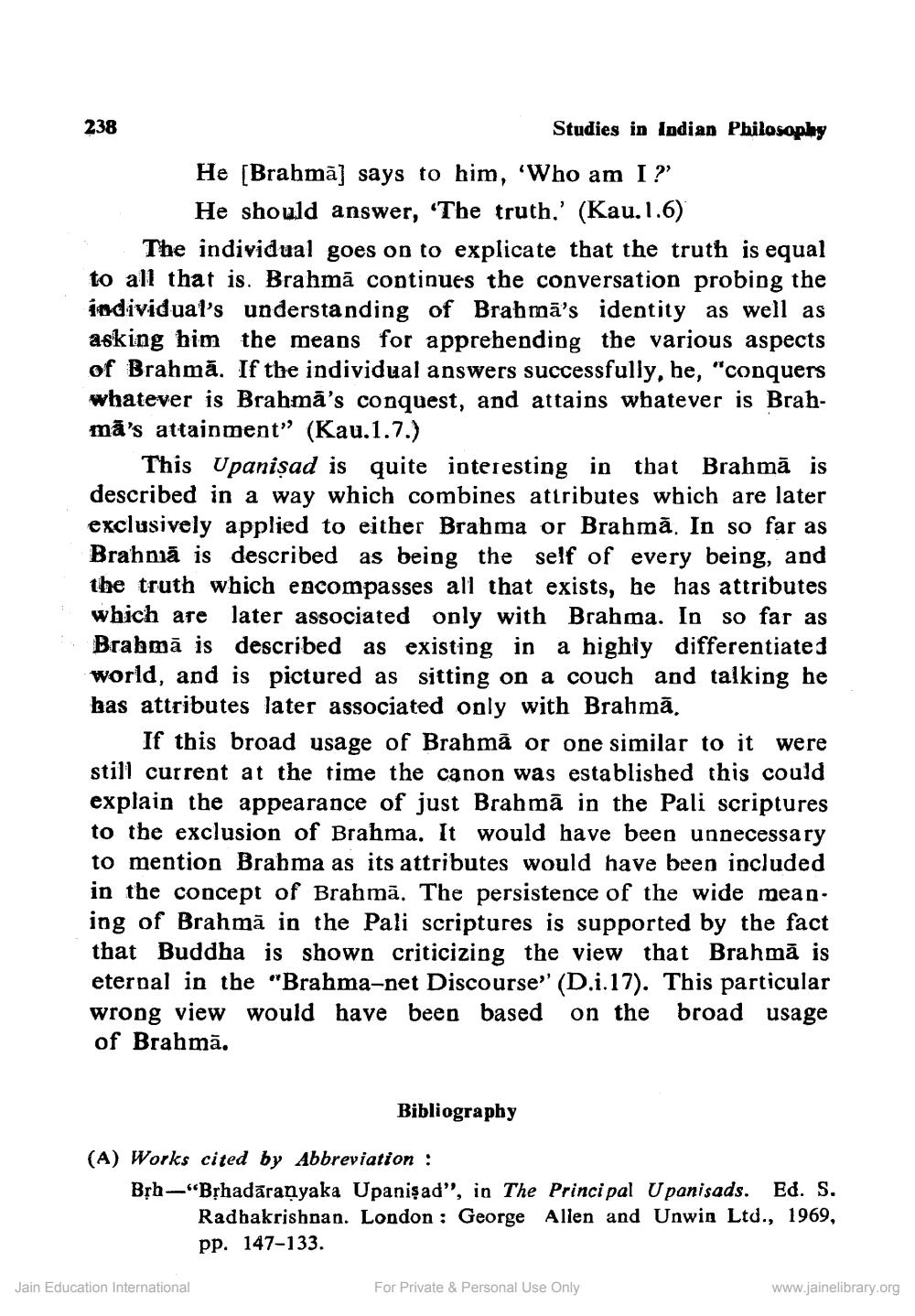________________
238
Studies in Indian Philosoplay
He [Brahmā] says to him, 'Who am I ?'
He should answer, 'The truth.' (Kau.1.6) The individual goes on to explicate that the truth is equal to all that is. Brahmā continues the conversation probing the individual's understanding of Brabmā's identity as well as asking him the means for apprehending the various aspects of Brahmä. If the individual answers successfully, he, "conquers whatever is Brahma's conquest, and attains whatever is Brahmā's attainment” (Kau.1.7.)
This Upanişad is quite interesting in that Brahmā is described in a way which combines attributes which are later exclusively applied to either Brabma or Brahmã. In so far as Brahnā is described as being the self of every being, and the truth which encompasses all that exists, he has attributes which are later associated only with Brahma. In so far as Brabmā is described as existing in a highly differentiated world, and is pictured as sitting on a couch and talking he has attributes later associated only with Brahmā.
If this broad usage of Brahmã or one similar to it were still current at the time the canon was established this could explain the appearance of just Brahmā in the Pali scriptures to the exclusion of Brahma. It would have been unnecessary to mention Brahma as its attributes would have been included in the concept of Brahmā. The persistence of the wide mean. ing of Brahma in the Pali scriptures is supported by the fact that Buddha is shown criticizing the view that Brahmā is eternal in the "Brahma-net Discourse" (D.1.17). This particular wrong view would have been based on the broad usage of Brahmā,
Bibliography
(A) Works cited by Abbreviation : Bșh—"BỊhadaranyaka Upanişad", in The Principal Upanisads. Ed. S.
Radhakrishnan. London: George Allen and Unwin Ltd., 1969, pp. 147-133.
Jain Education International
For Private & Personal Use Only
www.jainelibrary.org




